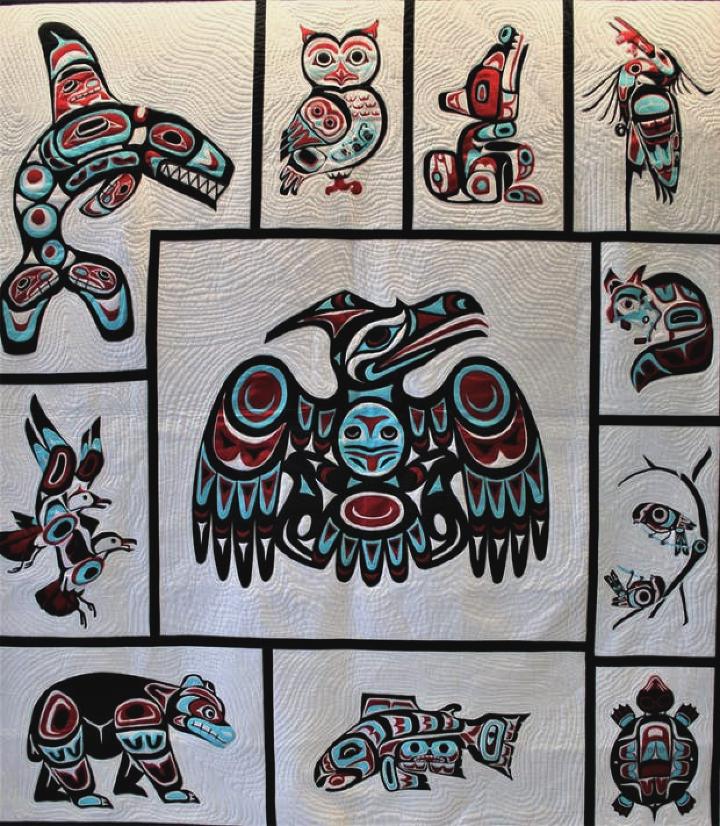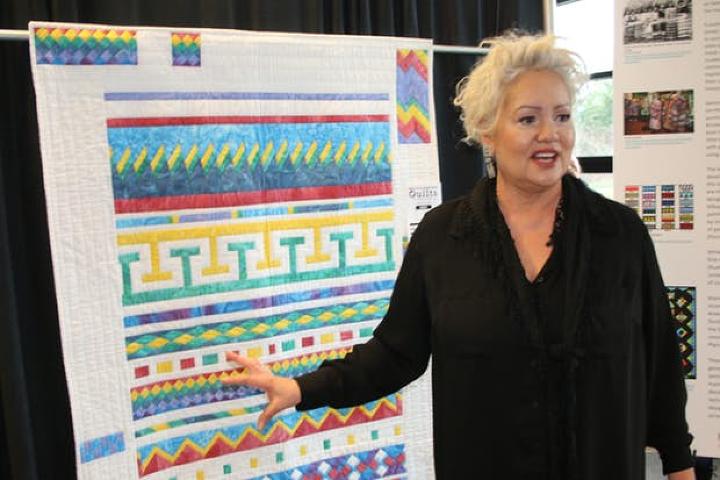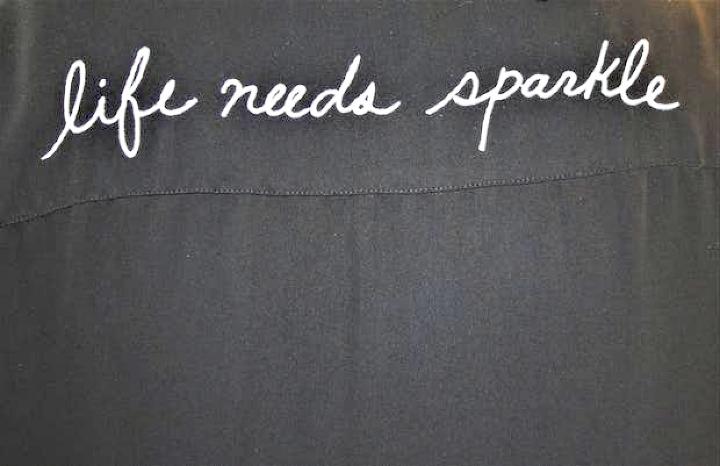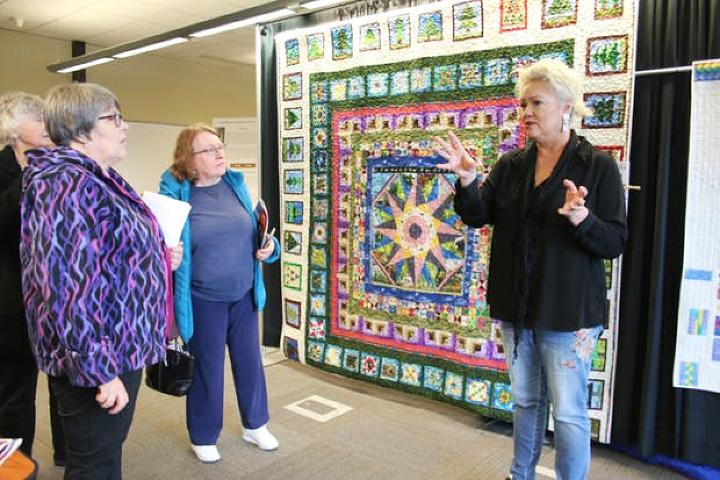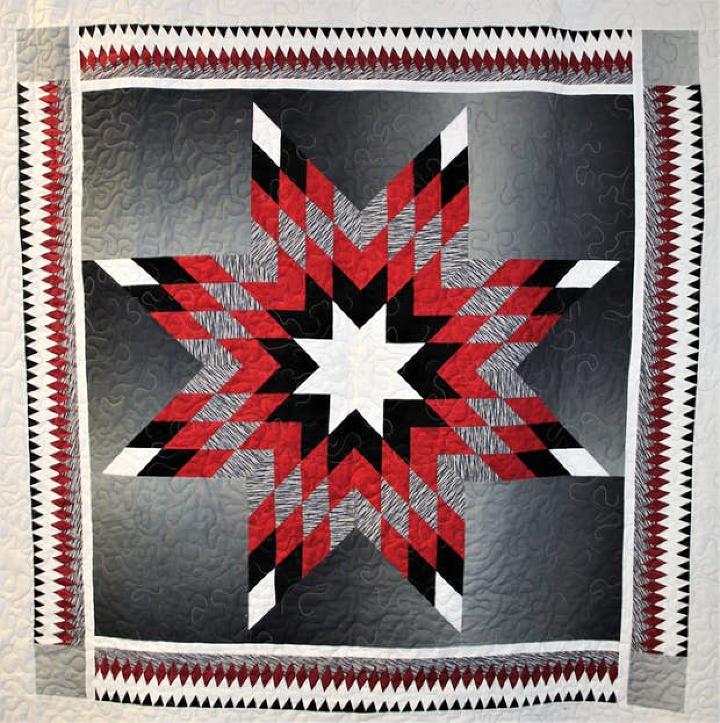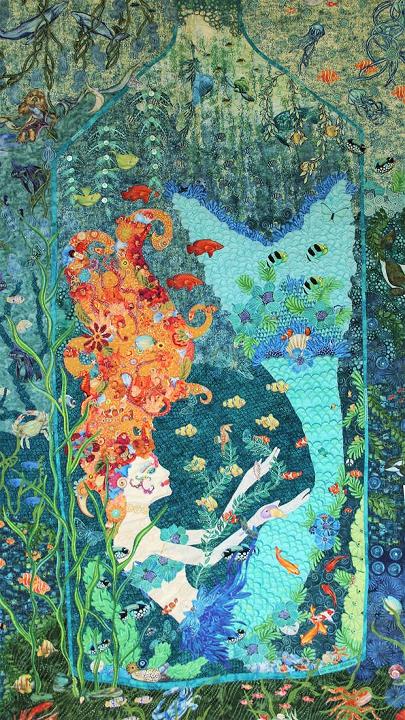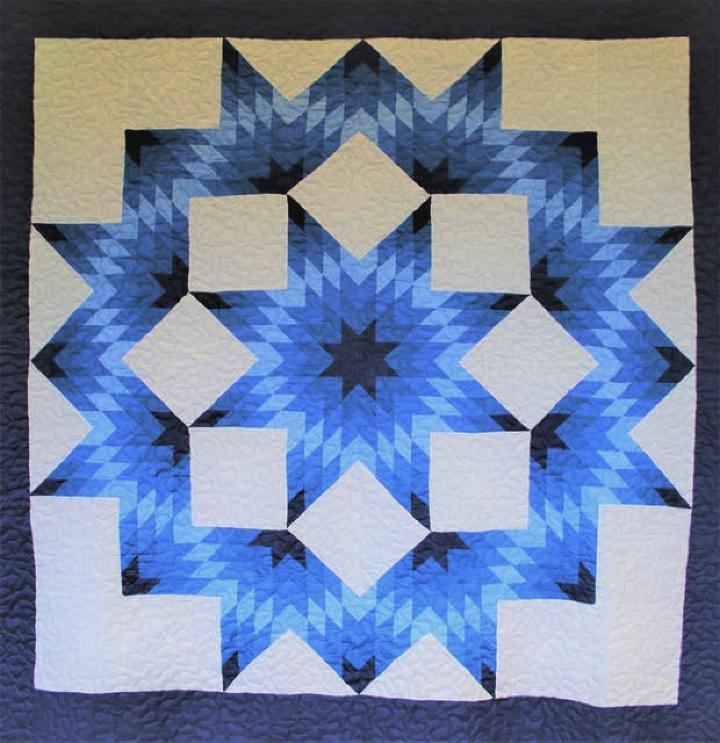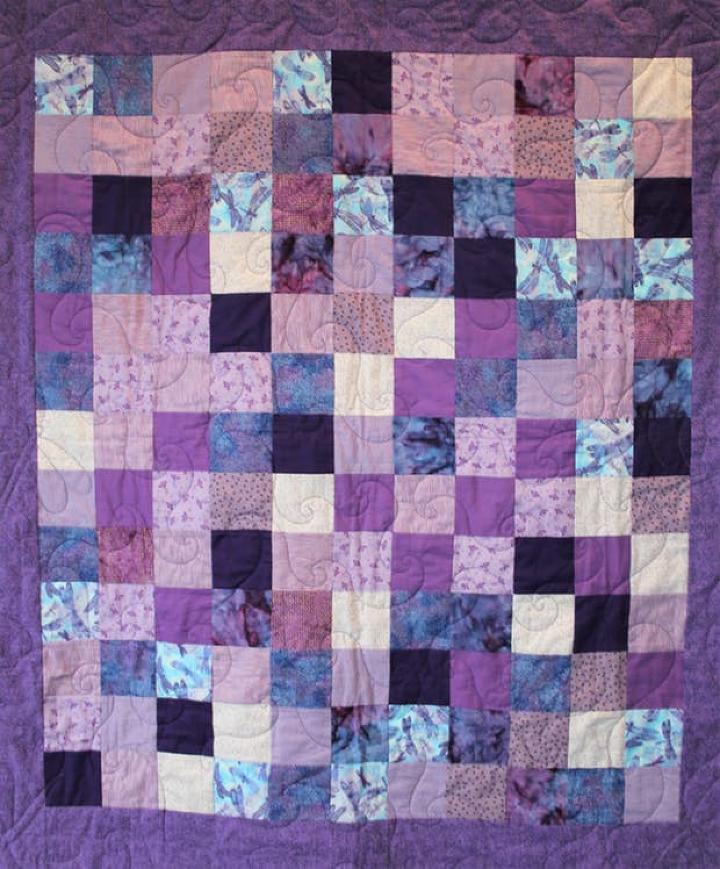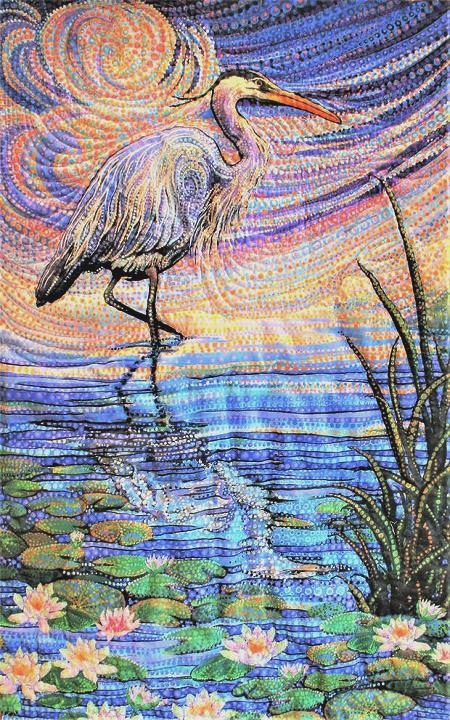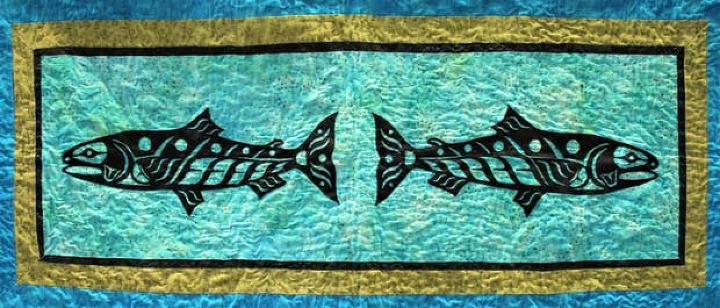 |
Canku Ota
|
 |
|
(Many Paths)
|
||
|
An Online Newsletter
Celebrating Native America
|
||
|
March 2020 - Volume
18 Number 3
|
||
|
|
||
|
The Resilience Of
Native Quilts
|
||
|
by Richard Arlin Walker
- Indian Country Today
|
||
|
‘Humble stitches,
generous threads’ highlights the beauty of Native quilts
For generations, Native American quilts have represented Indigenous resilience. In the same way that our grandmothers’ grandmothers figured out how to feed the young ones with the scant provisions that the Army gave out, the wise ones figured out how to take scraps of fabric and turn them into quilted blankets that would comfort loved ones on cold nights. The Army handed out blankets that poisoned people with smallpox; the grandmothers hand-stitched quilted blankets that represented comfort and love. The federal government tried to “kill the Indian, save the man.” The grandmothers incorporated patterns and symbols into their quilts that told the stories of their people and their cultures. “A tribal person said the other day, ‘When you think back on it, our relationship to blankets is a very painful thing because of the smallpox that was [introduced through] blankets way back in the day,’” said Colette Keith, Lakota, coordinator of Northwest Indian College’s exhibit, “Humble Stitches, Generous Threads | Quilts from Indian Country.”
The person told Keith, “Now, we’ve come to the point where we’ve reconciled that a [blanket] can be to honor and comfort, as opposed to trying to eradicate our people.” Keith told Indian Country Today, “I thought, wow, I never really thought about it that way. That’s beautiful. Quilting is a form of healing.”
Today, quilts are made to be given at baby showers, naming ceremonies, weddings and memorials. Tulalip women have long made quilts to honor veterans. And at Keith’s Cheyenne River Reservation, “I have gone to funerals where literally more than a hundred star quilts are given away,” she said. “Humble Stitches, Generous Threads” was a showcase of Native resilience, as well as mastery of a textile art. The exhibit took place Feb. 11-13 in the Tulalip Tribes Administration Building, on the Tulalip Reservation about 40 miles north of Seattle. More than 30 quilts by Native and non-Native quilters were exhibited. Keith said she believed it was the first Native quilt show since the University of New Mexico presented one 20 years ago. Many of the Native quilters represented in “Humble Stitches, Generous Threads” were or are quilting students at Northwest Indian College’s Tulalip campus.
The exhibit was a hit: Before the exhibit was over, there were plans for another one next year in a large ballroom at the Tulalip Casino Resort Hotel, with the support of the Northwest Indian College Foundation. Linda Willup, a teacher at the Northwest Indian College campus on the Swinomish Reservation, said her campus will start a sewing class in spring quarter. “Now that we’ve come here today, we’re looking at starting with a simple quilt project.” Each quilt in the exhibit was amazing in its detail and intricacy of hand and machine stitching. From west to east, there were Coast Salish totems, Hopi pinwheels, Plains star blocks, Northeast Woodland ribbon floral patterns, and Seminole patchwork diamond borders. “Reverie of Totems” by the Washington Stars Quilt Guild of Olympia featured 10 blocks of Coast Salish figures — killer whale, wolf, heron, salmon and bear, among them — around a large thunderbird in the center. The quilt is not for snuggling up in, Keith said; it’s a museum-quality display piece on loan to the exhibit but available for purchase for $6,500.
Lindsey Crofoot, Tlingit/Colville, teaches math and natural sciences at Northwest Indian College and is working on her graduate degree in natural resources at University of Idaho. She sews regalia and started quilting three years ago, following in the footsteps of an auntie who is a master quilter. Crofoot has since finished eight quilts. For her, quilting is “a time that just feels really good because, you know, you’re putting your hands to work,” she said. “I’ve only ever given my work away, so it feels good to be making something that you can give to someone else and make them feel good, make them feel comforted.” Like many pastimes in Indian Country, quilting is often a social activity. Some quilts, like “Reverie of Totems,” are a team project. And on some quilts, others step in to help the artist finish the journey. “Oh My Stars,” a star quilt, was finished by Crofoot and (NWIC) Northwest Indian College quilting students, completing a project started by Sandra Swanson, Tulalip. It consists of formatted pieces and fabric donated to the class by Swanson. “We finished them out and gave them new life and this is what happened,” Crofoot said. “When I saw this beautiful star quilt had been started but not finished, I wanted to put my hands to work and get that done.” Another quilt finished in this fashion was one by design artist Mark Anthony Jacobson, Ojibway/Swedish. The quilt is comprised of blocks featuring Ojibwe-influenced wildlife images and was pieced and sewn by Lisa Powers, Tulalip, and hand quilted by Keith. Cara Jo Retasket, Yakama, was a star of the show. The 11-year-old quilter wasn’t present on the day of this writing, but people were talking about how impressed they were with her interview on a television news program a day or two earlier.
Cara’s latest quilt, “Pink Unicorns,” was shown on the program and in the “Humble Stitches” exhibit. It is a star quilt with deep greens, blues and browns – all earthy colors – and has a purple border. It features, as the name suggests, pink unicorns and rainbows on diamond squares within the star. The quilt reflects, she said, “My love of unicorns.” She used purple for the border because it’s her favorite color. Displayed near her quilt was her grandmother Josephine Perrondeau’s star quilt, “Night Sky.” Perrondeau, Shuswap First Nation, has taught quilting at Northwest Indian College for 12 years. The star in her quilt is a vibrant red, white and black on a gray background and bordered by a red, white and black diamond pattern.
“Amarine,” by Northwest Indian College quilting instructor Deb Hanson, featured an underwater scene with a mermaid with sea life in her hair and around her. Hanson, who is of Swedish ancestry, used a luminescent thread for effect. More than one observer was struck by the quilt’s detail and commented that each time one looked at the quilt, a previously unnoticed detail was seen: a seal peeking over the mermaid’s tail, a seahorse in her hair, an actual sea shell sewn into the quilt, and uplifting quotes sewn into the border to include, “You are an original,” “Live in the now,” and “Holding your hand over the rainbow.”
An untitled quilt by honored featured quilter Luella Stevens, Athabascan, was equally elaborate. It started as a medallion quilt, then she incorporated fabrics with small motifs that had been contributed by friends and quilting class members. It evolved into a quilt representing the artist’s love of trees, trains, birds, bears, history, landmarks, and national parks. Other Native quilts in the exhibit included “Blue Sky Burst,” by prolific star quilter Ella Trudell, Santee Sioux; “Dragonfly,” a colorful patchwork quilt by Steph Cultee, Nooksack; and the Coast Salish-inspired “Heron at Tulalip” and “Swimming Upstream” by Keith.
Others carrying on the tradition of Native quilting at Tulalip include Misty Flores, Tulalip; Bonnie Follestad, Tulalip; Sherry Patricia Michell, Scowlitz; and Denise Gail Mitchell, Tulalip. The Native American quilt has evolved into a unique art form that represents the diversity and vibrancy of Indian Country, as well as resilience, tradition and sovereignty. “We have people who ask, ‘Can you sell this?’” Keith said. “We look at each other in our quilt room, and go, ‘What would you charge for this? You’ve worked on this for months. It’s kind of priceless.’”
Gathered
as One People - Tulalip Administration Building |
|||||||||||||||||||||
|
|
|
|
||
|
|
||
| Canku Ota is a free Newsletter celebrating Native America, its traditions and accomplishments . We do not provide subscriber or visitor names to anyone. Some articles presented in Canku Ota may contain copyright material. We have received appropriate permissions for republishing any articles. Material appearing here is distributed without profit or monetary gain to those who have expressed an interest. This is in accordance with Title 17 U.S.C. Section 107. | ||
|
Canku Ota is a copyright ©
2000 - 2020 of Vicki Williams Barry and Paul Barry.
|
||
 |
 |
|
|
The "Canku
Ota - A Newsletter Celebrating Native America" web site and
its design is the
|
||
|
Copyright ©
1999 - 2020 of Paul C. Barry.
|
||
|
All Rights Reserved.
|
||
